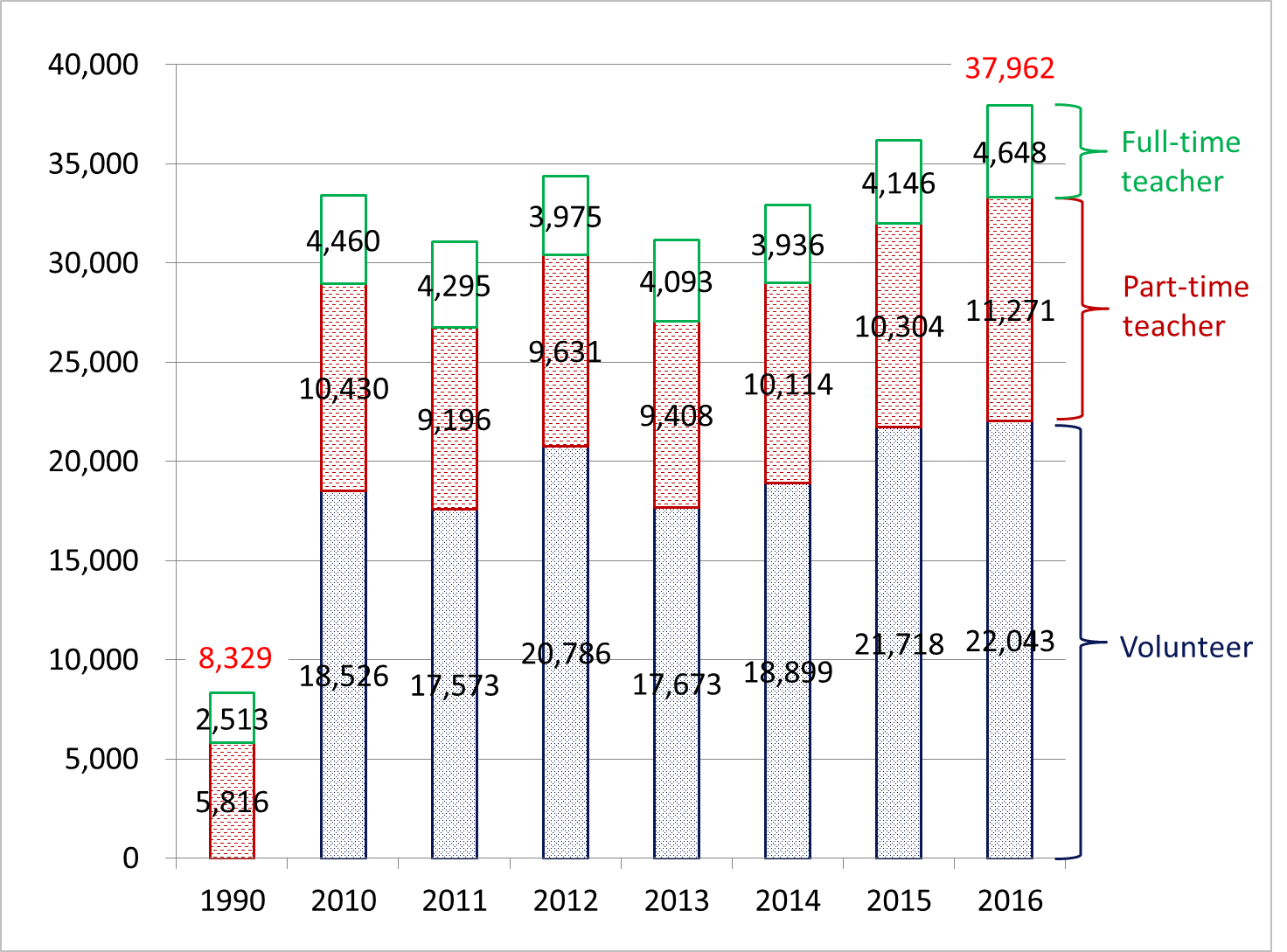Column Finance and the Social Security System 2018.03.29
【Aging, safety net and fiscal crisis in Japan】No.80: Improve the quality of Japanese language teachers who train foreigners in Japan
There is no national qualification system for Japanese language teachers who train foreigners in Japan. Universities and private Japanese language schools create curriculums with reference to the guidelines prepared by the Agency for Cultural Affairs in 2000. However, the contents of the university lessons tend to be biased toward theory, and lessons at private institutions tend to be biased toward practicality. In addition, there was a problem of variation in the quality of the teachers. Therefore, in March 2018, the Agency for Cultural Affairs announced that it would revise its guidelines.
As shown in Figure 1, the number of foreigners learning Japanese in Japan increased from 60,601 in 1990 to 217,881 in 2016. It is thought that the decrease in 2011 was due to the Great East Japan Earthquake. As shown in Figure 2, the number of Japanese language teachers is 37,962 as of 2016, with 4,648 full-time teachers, 11,271 part-time teachers and 22,043 volunteers. Figure 3 shows the number of organizations conducting training programs in Japanese language. Among them, the International Association is an outsider organization established by local governments for exchanges between foreign and Japanese residents.

Source: Agency for Cultural Affairs


